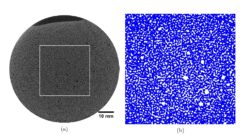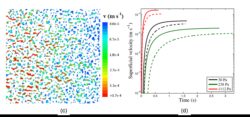Influence of multiphase microstructure and rheology on the dynamics of bubble growth and release from viscoelastic soft sediments
- Academic lead
- Tim Hunter (Chemical and Process Engineering)
- Industrial lead
- Martyn Barnes and Geoff Randall, Sellafield
- Co-supervisor(s)
- Jeff Peakall (Earth and Environment), David Harbottle (Chemical and Process Engineering)
- Project themes
- Environmental Flows, Particulate flows, sediments & rheology
The growth, retention and release of trapped gas within soft sediments is critically important in many natural and engineered systems; from methane formation within the muddy beds of aquatic reservoirs and waste water sludges to safety concerns from hydrogen gas release in corroded legacy nuclear wastes. This project will seek to significantly enhance our knowledge of these systems, by examining the mechanisms of bubble growth and release in viscoelastic sediments. In particular, we will focus on characterising the interplay between sediment microstructure (e.g. porosity) and fluid rheology on the dynamics of initial single bubble growth, secondary formation of interconnected bubble networks and the resulting influence on continuous gaseous release. The project will combine state-of-the-art x-ray CT measurements and visual data analysis with Lattice-Boltzmann and Monte Carlo techniques to simulate gas flow through porous networks (e.g. see Figure) as well as analytical modelling to link sediment rheology to bubble growth dynamics. The project is a collaboration with Sellafield, the U.Ks largest nuclear operator, with outcomes transferrable across natural sedimentology, particle engineering and complex fluid sciences.


Figure: (a) x-ray CT slice of gas contained within magnesium hydroxide sediment; (b) highlighted bubble network from same image; (c) Lattice-Boltzmann simulation through network; (d) Determined superficial gas velocity through three different yield stress suspensions. All figures adapted from Johnson et al., ''Enhanced gas migration through permeable bubble networks within consolidated soft sediments''.
